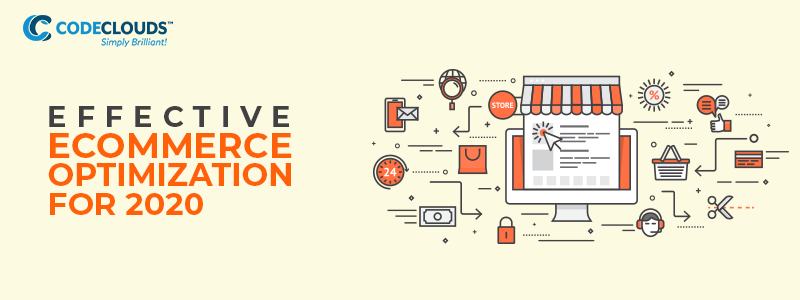Overview
Conversion optimization is both a science and an art, and today we’re breaking down the four things we think are the most important to making your profits soar.

ECommerce, especially small business eCommerce, can often live on a knife’s edge. Small changes can mean the difference between shortfall and profit, and optimization is a constant process. Today we’re going to be breaking down some core tenets of eCommerce conversion optimization, to hopefully help you turn red ink into black.
Branding
Branding matters. It’s one of the core pillars of marketing, and even the best companies will struggle without a coherent brand strategy. We’re branding experts here at CodeClouds, and we know that branding is both an art and a science. It takes a lot of time to get right, but here’s a few quick tips to help you get started:
- Remember Kotler & Pfoertsch’s five principles of good branding: Consistency, Clarity, Continuity, Visibility and Authenticity.
- Generally speaking, you want 2–3 neutral colours and one “statement” colour.
- Less is more: a single coherent image is worth a thousand vague or generic ones.
- Be known for being good; ‘good’ is always a tricky one to pin down but in general, try to be at least two out of three: 1) friendly 2) fast and affordable or 3) high-quality.
- Remember: you don’t create the brand, the audience creates the brand with the pieces you give them.
UX and Functional Design
The other major part of design that store owners should be aware of. UX (“user experience”) is a broad umbrella that covers that way users actually interact with your products. One of the easiest ways to understand this is to create what we call a ‘user persona’—a fake person who is a target user—and interact with your app or site while pretending to be them. UX can cover everything from navigation to accessibility to responses to colour schemes. The basic thing you need to be aware of is this: a website or application is a thing that people use. It’s not some inert stone tablet in the desert, it’s a dynamic collection of assets that responds to user interaction.
This also includes accessibility issues: over a quarter of Americans have some form of arthritis, and designing without that in mind (creating buttons that are small, or are in motion, or just creating too many clicks) can have a huge effect on conversions.
If you want to know what not to do, I’ve always found User Inyerface to be a great illustration of bad UX, that helps people understand just how much it can influence a page’s success.
Use the Right Data
We live in an age where we have unprecedented access to user data, but it’s important to be cautious—more data is not the same as better data. There’s often so much that you end up drowning out the signal in noise. I’ve seen companies with huge troves of unorganised data and it’s worth significantly less than a smaller, more organised, motivated, and well-connected dataset. Ask yourself why you want the data and what you’re trying to get out of it, and that will help you make better decisions about what you choose to collect.
Some good data types for eCommerce Conversion Optimization:
- User heat maps
- Session duration
- Entry/exit pages and user paths
- Referral locations
- Returning visitors
- Return visitor conversion rate
- Cost per conversion
Getting Technical with your Site
There’s a lot of overlap between conversion optimization and regular old site optimization—users will abandon slow-loading sites at frightening rates, and making sure your site loads in 3 seconds or less is crucial to increasing conversions. If you’re noticing a very high bounce rate, you might want to run some speed tests and figure out whether that’s the culprit. We’ve covered web speed optimization (and its little brother/sub-issue eCommerce image optimization) before but we really cannot overstate how important they are to making sure users stick around. Read those articles if you want more detail, but here’s the short version:
- Keep image sizes small: prune metadata, make sure the upload and display sizes are the same, make sure you’re using the right format
- Make sure your hosting plan can handle whatever you’re trying to do
- Consider GZip compression: almost all modern browsers support it now, and it can give a huge performance boost
- If you’re running a CMS like WordPress or Shopify, check your plugins—plugin bloat is a major cause of slow site speed
- Add a cache control HTTP header. You can use this to change how long a user’s browser caches your webpage for, which can significantly cut down load times if they’re a frequent visitor.
- Use web fonts over system fonts. Since they’re designed with browsers in mind, they render faster, and that can save you precious seconds.
- If you’re serving larger files, consider sorting out a CDN. Download volume isn’t a problem all sites have, but it can be crippling for those that do, and having something like Cloudflare to get around it is a huge asset.
The Last Word
ECommerce optimization doesn’t tend to be a case of ONE WEIRD TRICK, it tends to be the accumulation of results from smaller techniques. It’s also often a slow burn: it takes time to see any results, and it can be disheartening when you don’t turn your business profitable overnight. Just remember: nothing worthwhile ever got good overnight—even if it looks like it came out of nowhere, it probably took months or years of hard work and iteration to get to that stage. Be patient and dedicated, be precise and well-informed, keep breaking down that mountain with your toothbrush.

If you’d like help optimizing your site, especially if you struggle with making technical changes, you can always hire eCommerce developers from the team at CodeClouds.
Share this article
196 reads
Similar Reads








